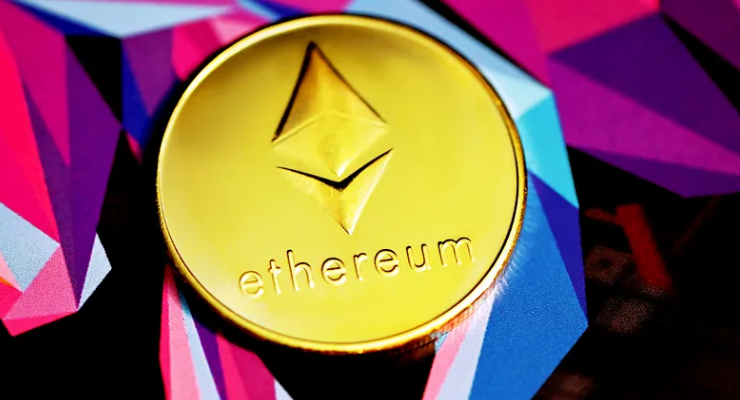The economics of Ethereum is a complex and varied subject that has a significant impact on the wider cryptocurrency market. Ethereum’s token economics is defined by the supply, demand, and price of its native token, Ether (ETH).
dApps
One of the key factors that drive the economics of Ethereum is its use as a platform for decentralized applications (dApps). A dApp is a software application that runs on a decentralized network, such as a blockchain. Unlike traditional applications that run on a centralized server, dApps have no central point of control or ownership. Instead, they rely on a decentralized network of computers to process transactions and store data.
One of the key benefits of dApps is that they are more secure and resistant to censorship than traditional centralized applications. Because dApps run on a decentralized network, there is no central point of control or ownership that can be hacked or manipulated. Additionally, dApps are transparent and open-source, meaning that anyone can view and contribute to their underlying code.
Ethereum is one of the most popular platforms for building dApps. The Ethereum network provides a decentralized platform for developers to build and deploy dApps, and its smart contract functionality allows developers to create decentralized applications that are self-executing and transparent.
Examples of popular dApps include decentralized exchanges (DEXs), non-fungible token (NFT) marketplaces, and prediction markets. The use cases for dApps are vast and varied, and they have the potential to disrupt many different industries and change the way we interact with technology.
Proof-of-stake
In the proof-of-stake (PoS) mechanism, new coins are created through a process known as staking. Staking involves locking up a certain amount of ETH as collateral in exchange for the opportunity to validate transactions and earn rewards.
In a PoS system, validators (also known as stakers) are selected to validate transactions based on the amount of ETH they have staked. The more ETH a validator has staked, the more likely they are to be selected to validate transactions. When a validator is selected, they validate a block of transactions and earn a reward for their work. This reward is paid in newly created ETH tokens.
The creation of new ETH tokens in a PoS system is much more energy-efficient than in a proof-of-work (PoW) system, where new coins are created through the process of mining. In a PoW system, miners use computing power to solve complex mathematical problems and validate transactions, which requires a significant amount of energy.
By contrast, in a PoS system, validators do not need to use as much computing power or energy to validate transactions, which makes the system more environmentally friendly and sustainable. Additionally, because validators are incentivized to act honestly, the PoS mechanism is more secure and resistant to 51% attacks and other forms of malicious behavior.
Overall, the move made by Ethereum from PoW to PoS offers several benefits over the PoW mechanism used by Bitcoin. These benefits include increased energy efficiency, improved security, better scalability, and a more decentralized network.
Wider Market
The impact of Ethereum’s economics on the wider cryptocurrency market is significant. The success of Ethereum and its growing ecosystem have helped to legitimize the entire cryptocurrency market and have led to the creation of many new cryptocurrencies and decentralized financial projects. Ethereum’s strong network effect and its position as the leading platform for decentralized applications have made it a key player in the cryptocurrency market and have helped to drive innovation and growth in the sector.
Below are some examples of cryptocurrencies and decentralized financial projects that operate on the Ethereum ecosystem:
Uniswap: A decentralized exchange (DEX) that allows users to trade cryptocurrencies without the need for intermediaries.
MakerDAO: A decentralized lending platform that allows users to take out loans using cryptocurrencies as collateral.
Aave: A decentralized lending and borrowing platform that allows users to earn interest on their crypto holdings and take out loans against their assets.
Compound: A decentralized lending and borrowing platform that allows users to earn interest on their crypto holdings and take out loans against their assets.
Chainlink: A decentralized oracle network that provides real-world data to smart contracts on the Ethereum blockchain.
Synthetix: A decentralized synthetic asset platform that allows users to trade synthetic assets that track the price of traditional assets, such as stocks, commodities, and currencies.
Yearn.finance: A decentralized finance (DeFi) platform that provides yield optimization services for crypto assets.
Bancor: A decentralized liquidity network that allows users to trade cryptocurrencies without the need for intermediaries.
The Ethereum blockchain provides a platform for developers to build and deploy decentralized applications, and the DeFi space is one of the most active and innovative areas of development within the Ethereum ecosystem.
Conclusion
The reason I believe that Ethereum could become the boss is because the Ethereum ecosystem is home to a thriving and innovative decentralized finance (DeFi) sector, with numerous cryptocurrencies and projects offering a range of financial services. From decentralized exchanges like Uniswap and Bancor, to lending platforms like MakerDAO and Aave, to yield optimization services like Yearn.finance, the Ethereum blockchain provides a platform for developers to build and deploy decentralized applications that are changing the way people think about finance. The DeFi sector is still in its early stages, but it is clear that it has the potential to have a major impact on the financial industry in the years to come.
There is still some risk associated, the SEC crackdown that I’ve touched on in previous articles could have a significant impact, however, as highlighted above there are a lot of positives still going for Ethereum.

 English
English
 Deutsch
Deutsch
 Español
Español
 Français
Français
 Português
Português
 日本
日本
 한국인
한국인
 Türkçe
Türkçe
 Русский
Русский
 Tiếng Việt
Tiếng Việt
